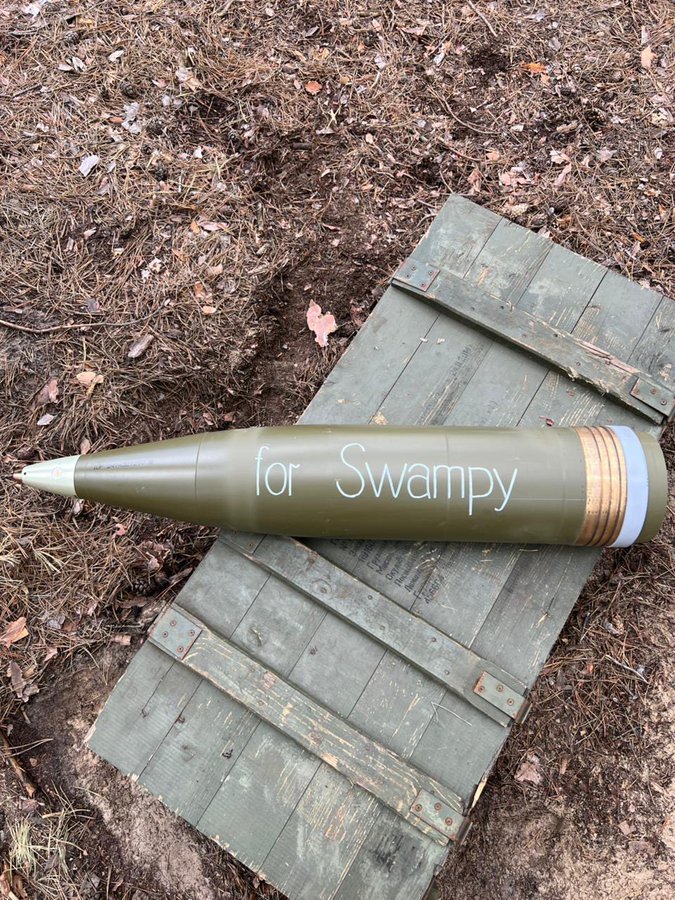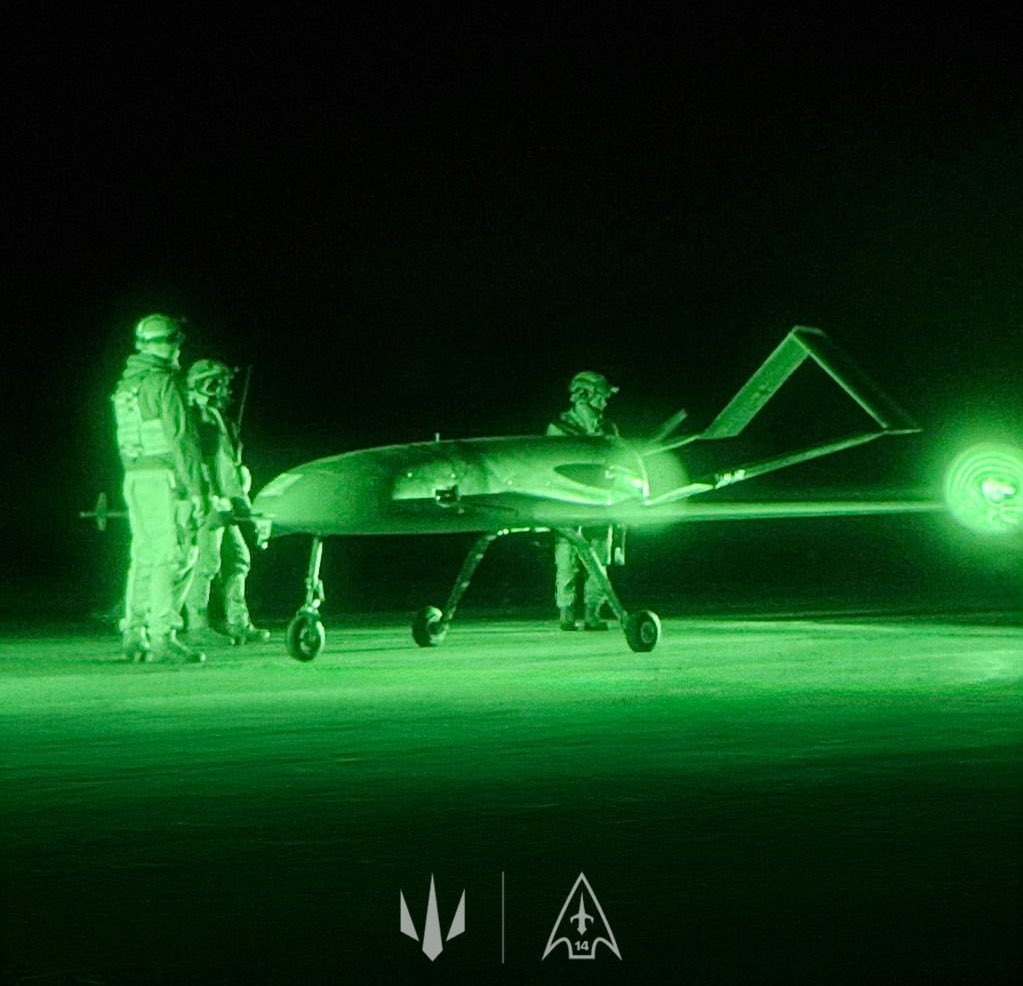Few lawyers better appreciated the importance of terminological precision than my late friend and law of war colleague, Hays Parks. Over three decades ago, he turned his attention to assassination. This post builds on his work by elaborating on the precise meaning of assassination in the context of armed conflict. In doing so, it identifies definitional elements that emphasize the traditional association of assassination with prohibited practices of wartime treachery and outlawry.
Background
In 1977, following revelations of U.S. lethal targeting operations and ensuing Church (Senate) and the Pike (House) Committee hearings, President Gerald Ford issued Executive Order 11,905. The order prohibited Executive Branch personnel from engaging in, or conspiring to engage in, political assassination. Subsequent administrations continued the ban. Four years later, President Regan issued Executive Order 12,333, which, as amended, remains in effect today. It contains the same prohibition, although it limits application to individuals “acting on behalf of” the U.S. government.
The issue of assassination surfaced again in 1989 as the Judge Advocate General’s International Affairs Division was rewriting the 1956 Field Manual 27-10, The Law of Land Warfare, a project completed in 2019. As part of that effort, Hays Parks, who was then the Chief of the Division’s International Law Branch, wrote a memo of law examining the E.O.’s assassination prohibition from the perspective of both peacetime law and the law of war (Hays’s preferred term for the latter body of law).
His memo, published in the Army Lawyer, became a classic in the field, in part because of its timing. In just over a year, the United States would be at war with Iraq, a conflict during which the issue of assassination occupied center stage. Once the war began in January 1991, the United States launched over 250 missions against sites where Saddam Hussein was believed to be hiding. Yet, when Air Force Chief of Staff, General Michal Dugan had suggested in September 1990 that because Saddam is “a one-man show” in Iraq, “he ought to be at the focus of our efforts,” Secretary of Defense Dick Cheney promptly fired him.
The issue of so-called assassination during armed conflict has not faded with time. The “targeted killing” debates have addressed a panoply of issues that range from conflict classification and the geography of war to conduct of hostilities rules and the interplay between the law of war and human rights law. And then there are headline attacks such as the September 2021 Israeli attack on Iranian nuclear scientist Mohsen Fakhrizadeh and the U.S. airstrike on Iranian Revolutionary Guard Major General Qasem Soleimani in January 2020 (here and here). Despite frequent characterization of such operations as assassination, the term is in fact a legal term of art in both the law of peace and the law of war. In the law of war, the concept of assassination is far narrower than its popular usage might suggest, a point Hays explained thoroughly in his memo.
The Early Law of War
The law of war has long countenanced killing the enemy, including enemy leaders, away from the battlefield. For instance, in the 13th century, Saint Thomas Aquinas argued that killing the enemy sovereign was justified when in the common good, while three centuries later Sir Thomas More asserted that “great rewards” awaited those who killed the “enemy prince” during war (Utopia). And in the 17th century, Hugo Grotius, often considered the father of modern international law, observed in On the Law of War and Peace, his classic work in the field, that “Not merely by the law of nature but also by the law of nations … it is in fact permissible to kill an enemy in any place whatsoever; and it does not matter how many there are that do the deed, or who suffer.”
But the right to kill one’s enemy during war was not considered wholly unregulated. During the 16th century, Balthazar Ayala agreed with Saint Augustine’s contention that it “is indifferent from the standpoint of justice whether trickery be used” in killing the enemy, but then distinguished trickery from “fraud and snares” (The Law and Duties of War and Military Discipline). Similarly, Alberico Gentili, writing in the next century, found treachery “so contrary to the law of God and of Nature, that although I may kill a man, I may not do so by treachery.” He warned that treacherous killing would invite reprisal (Three Books on the Law of War). And Hugo Grotius likewise explained that “a distinction must be made between assassins who violate an express or tacit obligation of good faith, as subjects resorting to violence against a king, vassals against a lord, soldiers against him whom they serve, those also who have been received as suppliants or strangers or deserters, against those who have received them; and such as are held by no bond of good faith” (On the Law of War and Peace).
By the 18th century, the element of treachery was firmly entrenched as the key to distinguishing assassination from lawful killing during war. Illustrative was Emmerich de Vattel’s clarification in The Law of Nations or the Principles of Natural Law.
But in order to reason clearly on this question we must first of all avoid confusing assassination with surprises, which are, doubtless, perfectly lawful in warfare. When a resolute soldier steals into the enemy’s camp at night and makes his way to the general’s tent and stabs him, he does nothing contrary to the natural laws of war, nothing, indeed, but what is commendable in a just and necessary war….
Hence I mean by assassination a murder committed by means of treachery, whether the deed be done by persons who are subjects of him who is assassinated, or of his sovereign, and who are therefore traitors, or whether it be done by any other agent who makes his way in as a suppliant or refugee, or as a turncoat, or even as an alien; and I assert that the deed is a shameful and revolting one, both on the part of him who executes and of him who commands it.
Thus, as the modern law of war emerged in the mid-19th century, the concept of assassination was already well-formed. It was lawful to kill an enemy beyond the battlefield or by employing stealth or trickery, but not lawful to use treachery to do so. Treachery comprised a breach of confidence by the attacker in a situation where the victim had reason to trust that attacker. In that sense, it foreshadowed the distinction between ruses and perfidy that would appear in 20th-century treaties and customary law of war.
The Modern Law of War
The first formal State codification of the ban on assassination appeared in the 1863 Lieber Code, issued by President Lincoln as General Order 100. Article 148, titled “Assassination,” provided:
The law of war does not allow proclaiming either an individual belonging to the hostile army, or a citizen, or a subject of the hostile government, an outlaw, who may be slain without trial by any captor, any more than the modern law of peace allows such intentional outlawry; on the contrary, it abhors such outrage. The sternest retaliation should follow the murder committed in consequence of such proclamation, made by whatever authority. Civilized nations look with horror upon offers of rewards for the assassination of enemies as relapses into barbarism.
Although the term treachery did not feature in the article, the sense that certain acts violate the law of war principle of chivalry, which is reflected in the work of the earlier scholars, was clear. In Article 101 of the Code, however, the term did appear, demonstrating its centrality to how war was not to be fought: “While deception in war is admitted as a just and necessary means of hostility, and is consistent with honorable warfare, the common law of war allows even capital punishment for clandestine or treacherous attempts to injure an enemy, because they are so dangerous, and it is difficult to guard against them.” In subsequent national and international codification efforts, treachery assumed a place of prominence in the treatment of assassination, as it had historically.
The Lieber Code sparked other codification projects, particularly in Europe. In 1874, Czar Alexander II of Russia convened an international conference to draft a law of war convention. Although the resulting Brussels Declaration was never ratified, its Article 13 provided, “murder by treachery of individuals belonging to the hostile nation or army” was “especially forbidden.” The Declaration influenced the next major codification attempt, the Institute of International Law’s 1880 Oxford Manual, Article 8 of which outlawed any “treacherous attempt on the life of an enemy; as for example keeping assassins in pay or by feigning surrender.”
These documents served as the basis for drafting the 1899 Hague Convention (II) with Respect to the Laws and Customs of War, in which the ban on treacherous killing finally appeared in binding treaty form. Article 23(b) of its annexed Regulations observed that “it is especially prohibited … to kill or wound treacherously individuals belonging to the hostile nation or army.” The article also banned denying quarter and attacking a member of the enemy forces who is hors de combat. A second Hague Peace Conference in 1907 slightly revised that instrument, although Article 23(b) survived unchanged in the Regulations annexed to its Hague Convention IV.
Following World War II, the International Military Tribunal at Nuremberg found that “[t]he rules of land warfare expressed in the Convention undoubtedly represented an advance over existing International Law at the time of their adoption …, but by 1939 these rules … were recognized by all civilized nations and were regarded as being declaratory of the laws and customs of war.” The International Military Tribunal for the Far East and the International Court of Justice (Nuclear Weapons Advisory Opinion), among other authoritative bodies and eminent scholars, have also validated the customary law character of the Hague IV Regulations rules, and therefore the prohibition on treacherous killing. As such, the rule binds all States today.
The most recent comprehensive treaty governing the conduct of hostilities is the 1977 Protocol Additional (I) to the Geneva Conventions of 12 August 1949, and relating to the Protection of Victims of International Armed Conflicts. Additional Protocol I’s Article 37 styles acts during an armed conflict that were previously labeled assassination as “perfidy.” The article confirms again that the essence of the prohibition is treachery, not mere deception or trickery.
1. It is prohibited to kill, injure or capture an adversary by resort to perfidy. Acts inviting the confidence of an adversary to lead him to believe that he is entitled to, or is obliged to accord, protection under the rules of international law applicable in armed conflict, with intent to betray that confidence, shall constitute perfidy. The following acts are examples of perfidy:
(a) the feigning of an intent to negotiate under a flag of truce or of a surrender;
(b) the feigning of an incapacitation by wounds or sickness;
(c) the feigning of civilian, non-combatant status; and
(d) the feigning of protected status by the use of signs, emblems or uniforms of the United Nations or of neutral or other States not Parties to the conflict.
2. Ruses of war are not prohibited. Such ruses are acts which are intended to mislead an adversary or to induce him to act recklessly but which infringe no rule of international law applicable in armed conflict and which are not perfidious because they do not invite the confidence of an adversary with respect to protection under that law. The following are examples of such ruses: the use of camouflage, decoys, mock operations and misinformation.
The ICRC’s Commentary to Article 37 emphasizes that Article 23(b) of the Hague Regulations “has survived in its entirety” and that replacement of the reference to treachery with perfidy occurred because the term “trahison” in the French text was “too restricted in its meaning.” Therefore, the drafters preferred the term “perfidie” as more reflective of their intent. Rule 65 of the ICRC’s Customary International Humanitarian Law study characterizes the perfidy prohibition as customary in character, and therefore binding on all States irrespective of Additional Protocol I Party status. In doing so, it is on firm ground.
Finally, the Statute of the International Criminal Court includes “[k]illing or wounding treacherously individuals belonging to the hostile nation or army” in international armed conflict, as well as “[k]illing or wounding treacherously a combatant adversary” in non-international armed conflict, a war crime [Articles 8(2)(b)(xi) and 8(2)(e)(ix), respectively]. Thus, the Statute’s drafters reverted to the language of the 1907 Hague IV Regulations and concluded that the prohibition applied in all armed conflicts.
U.S. Treatment
While the United States is not a Party to Additional Protocol I, with one exception (the reference to “capture”), it accepts Article 37 as reflective of customary law. Indeed, well before the adoption of Additional Protocol I, the Army’s 1956 Field Manual 27-10, the Law of Land Warfare acknowledged the customary status of the assassination prohibition. Referring directly to Article 23(b) in a section titled “Assassination and Outlawry,” the manual observed, “This article is construed as prohibiting assassination, proscription, or outlawry of an enemy, or putting a price upon an enemy’s head, as well as offering a reward for an enemy ‘dead or alive’. It does not, however, preclude attacks on individual soldiers or officers of the enemy whether in the zone of hostilities, occupied territory, or elsewhere.”
The provision’s title distinguishes assassination from outlawry, suggesting a difference between the two. Yet, the Lieber Code described assassination in terms of outlawry. Additionally, a footnote to the Additional Protocol I commentary on Article 37 notes that Morris Greenspan, in his classic 1960 work, The Modern Law of Land Warfare, interpreted Hague Regulations Article 23(b) as prohibiting
assassination, recruitment of hired killers, placing a price on the head of an adversary, or the offer of a reward for his capture ‘dead or alive’; proscription and outlawry of an enemy, treacherous request of quarter, and the treacherous simulation of death, wound or sickness, or pretended surrender, for the purpose of putting the enemy off his guard and then attacking him.
This would suggest that assassination can include both treacherous acts like perfidy and outlawry, such as placing a price on an enemy’s head.
Contemporary U.S. manuals are in accord with FM 27-10. For example, the 2016 Department of Defense Law of War Manual provides in section 5.22 that “[d]uring international armed conflict, it is prohibited to kill or wound the enemy by resort to perfidy,” noting that the terms treachery and perfidy have been used interchangeably. Citing Article 37 of Additional Protocol I as support, it defines perfidy (and thus treachery) as “acts that invite the confidence of enemy persons to lead them to believe that they are entitled to, or are obliged to accord, protection under the law of war, with intent to betray that confidence.” As further indication that perfidy is tied to the notion of assassination (killing), the manual limits the prohibition to acts designed to kill or wound the enemy.
An interesting footnote in the Law of War Manual dealing with parlementaires (persons communicating with the enemy) illustrates the longstanding centrality of treachery in the prohibition. It reproduces an extract from an 1873 Opinion of the Attorney General to make that point: “According to the laws of war there is nothing more sacred than a flag of truce dispatched in good faith, and there can be no greater act of perfidy and treachery than the assassination of its bearers after they have been acknowledged and received by those to whom they are sent.”
The Army and Marine Corps’ 2019 manual, The Commander’s Handbook on the Law of Land Warfare (FM 6-27/MCTP 11-10CH), adopts the same approach. It explains that “[p]erfidy involves specific requirements: a killing or wounding of the enemy; the intent (mens rea) to act treacherously (i.e., the intent to kill or wound) (H.R. art. 23(b)); an entitlement or obligation under LOAC; and a nexus in time (that is, immediate tactical advantage) between the treacherous action and the killing or wounding.” The manual provides numerous examples, including “Soldiers and Marines in civilian clothing may resist an attack so long as they do not kill or wound treacherously, such as by deliberately seeking to feign civilian status or other protected status while fighting.”
Both the DoD and Army Manuals also prohibit placing a price on the enemy’s head (Section § 5.26.3.1 and ¶ 2-186, respectively).
Conclusions
Assassination during wartime denotes (1) the treacherous, (2) wounding or killing, of (3) individual adversaries, in other words, perfidious attacks. Although the two terms often appear in the disjunctive, it is also reasonable to include outlawry, such as putting a price on the enemy’s head, within the scope of the definition assassination, as was done in the Lieber Code and suggested by Greenspan. The United Kingdom’s 1958 Military Manual took this position, and correctly so in my estimation: “In view of the prohibition of assassination, the proscription or outlawing or the putting of a price on the head of an enemy individual or any offer for an enemy ‘dead or alive’ is forbidden.” Similarly, Australia’s 2006 Law of Armed Conflict Manual section titled “Assassination” notes, “it is prohibited to put a price on the head of an enemy individual. Any offer for an enemy ‘dead or alive’ is forbidden.”
Military manuals have occasionally suggested that assassination is limited to non-combatants or requires a particular mens rea. For example, the Australian manual provides, “Assassination is the sudden or secret killing by treacherous means of an individual who is not a combatant, by premeditated assault, for political or religious reasons.” Similarly, the 2001 Canadian Law of Armed Conflict Manual states, “Assassination means the killing or wounding of a selected non-combatant for a political or religious motive.”
However, the historical intent of the prohibition during armed conflict was to encompass the treacherous killing of the enemy, not just non-combatants. This is clear from the Hague Regulations’ Article 23(b)’s reference to “individuals belonging to the hostile nation or army,” which would include civilians and members of the armed forces. Additionally, the prohibition of assassination contains no mens rea requirement beyond an intent to betray a confidence or to encourage others to kill the individual(s) by placing a price on their head.
Finally, it must be cautioned that the definition of assassination and its prohibition during armed conflict differ significantly from the concept and prohibition in peacetime, a subject I have examined elsewhere. The killing of an individual must be attributable to a State, have political overtones, and evidence transnational character to amount to unlawful peacetime assassination. An example was the 2017 murder of Kim Jong-un’s half-brother, Kim Jong-nam, using the nerve agent VX in the Kuala Lumpur airport.
This distinction raises the sometimes-complex issue of whether the situation under consideration is one of armed conflict to which the law of war applies or falls short of that threshold and therefore is subject to the law bearing on peacetime assassination, including international human rights and domestic law. An interesting case in this regard, analysis of which is beyond the scope of this article, is the Soleimani airstrike mentioned earlier. But once the conflict classification analysis concludes an armed conflict is underway, the prohibition on assassination in its current law of war form comes into play.
Hays Parks’ critical point in his prescient 1989 memo is that “assassination” is a legal term of art that takes on different meanings depending on whether it is used in the context of peace or war. Unfortunately, as no one understood better than Hays, that point is too often missed in contemporary commentary and analysis.
***
 First, Peace through Strength is not "warmongering", but military weakness does invite aggression by bad actors and so clearly, advocating for weakness is a form of warmongering.
First, Peace through Strength is not "warmongering", but military weakness does invite aggression by bad actors and so clearly, advocating for weakness is a form of warmongering.

 We don't chose our enemies, they chose where to attack our friends and vital interests.
We don't chose our enemies, they chose where to attack our friends and vital interests.









